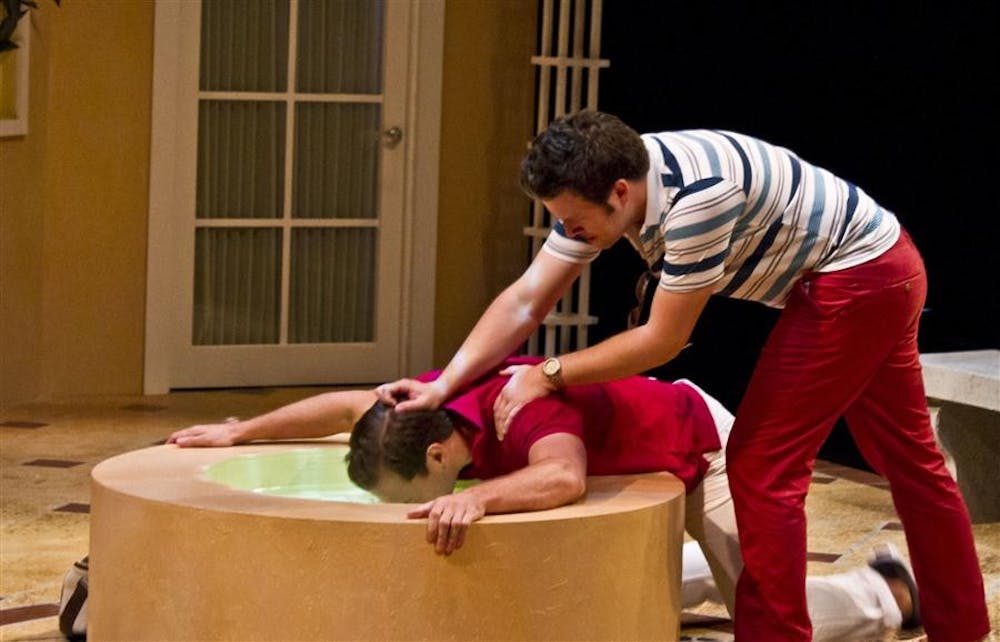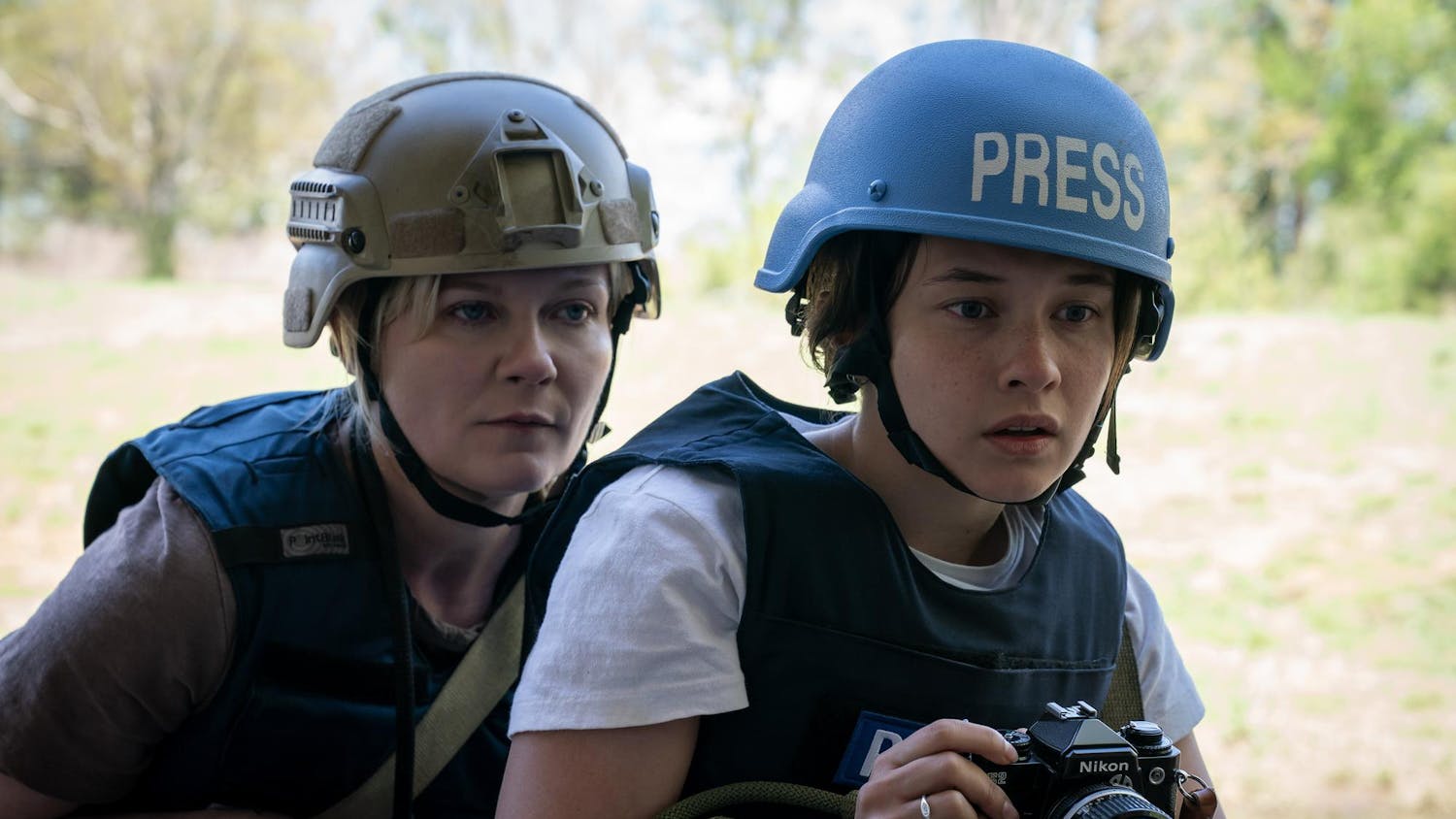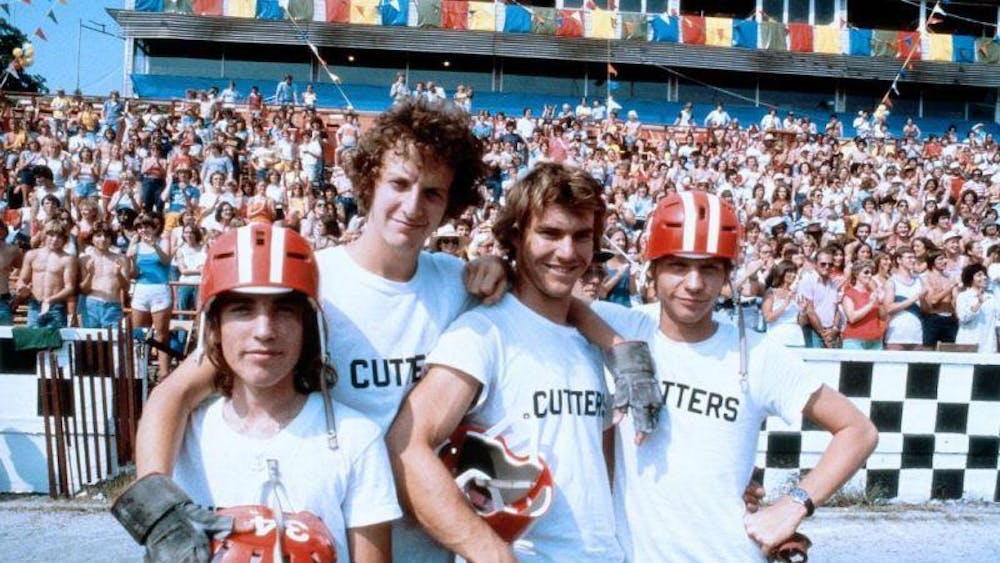To the audience watching William Shakespeare’s “The Taming of the Shrew,” the entire production seems effortless. But behind the scenes, dozens of people have worked tirelessly to ensure the production’s success.
Behind the stage curtains, the crew buzzed with energy: using paintbrushes, hammers and sewing machines to put the final touches on sets and costumes.
“The Taming of the Shrew” premieres 7:30 p.m. July 5 at the Wells-Metz Theatre at the IU Department of Theatre and Drama. The show, which is part of the 2012 Indiana Festival Theatre, runs until July 28.
“The Taming of the Shrew” will run in conjunction with another comedy, “You Can’t Take It With You.” The casts for both shows are part of a rotating repertory and take multiple roles.
“It’s challenging in that you have to rehearse two shows at once and get the scenery, lighting, and costumes all ready at the same time,” said Jonathan Michaelsen, director of "The Taming of the Shrew." “But it’s interesting also because we use the same company. The audience gets to see the actor in two different roles.”
The actors are a mix of theater students and professional actors. IU alumna Molly Casey plays Katherina, or Kate, as the shrew. Adam Noble, a member of the Actors’ Equity Association and an assistant professor of movement and combat for the IU Department of Theatre and Drama, plays Petruchio, Kate’s suitor.
“The Taming of the Shrew” takes place in a rather unlikely place. The setting is in Florida in present-date, giving it a “spring break-like atmosphere,” Michaelsen said.
Adapting Shakespearian plays in unusual eras and locales is nothing new, Michaelsen said. He said he has seen “The Taming of the Shrew” set in the Wild West, the Edwardian and Victorian eras and the 1950s.
“We changed some of the language, not a huge amount, but we interspersed it with a lot of technology,” he said. “They have smartphones and things that modern life deals with. We haven’t changed it too much, it’s still pretty straightforward, but it’s a sort of fine line to walk.”
Tim Barbiaux, the play’s scenic designer for both “The Taming of the Shrew” and “You Can’t Take It With You,” began making sets at the beginning of June, using a crew of nine designers.
“It takes five of us on changeover crew two hours every night to set up,” said John Houtler, a technical designer for the two shows. “We’ve mobilized everything on essentially two giant rolling wagons to make the changes easier from night to night.”
Barbiaux built a dual-level 6-by-18-foot long set built on a wagon for quick changes from alternating shows each night.
“I modeled the set after a typical beachfront property, using a compass rose motif mixed with a sunburst pattern, both prevalent in Florida,” said Barbiaux. “We used pastel pinks, oranges, and yellows that feel brighter under the stage lights, and foliage everywhere to set the tropical feeling.”
In addition to the aesthetic, practicality and mobility are also important considerations that went into the design of the set.
“To make it easier, we used indoor and outdoor tile flooring that could conceivably work in a Miami beach home or 1930s brownstone also for ‘You Can’t Take it With You,’” Barbiaux said.
Like Barbiaux, Jason Orlenko, the costume deisigner for both of the productions and a recent IU graduate with his masters of fine arts, has selected a tropical color palette in his wardrobe choices for the production.
“We wanted it to look like a Lacoste or Tommy Hilfiger ad,” Orlenko said. “White jeans and lounging on the docks.”
Each outfit a character will wear on stage represents the careful collaboration between the director and costume designer.
“Kate is the rebellious character so black and leather sets her apart from the rest of the ensemble, who wears brightly-colored pants and white shirts,” Orlenko said.
At the beginning of “The Taming of the Shrew,” Petruchio is a war veteran and starts in camouflage print, but by the end of the production, he becomes Kate’s equal, and they both wear jeans, leather jackets and motorcycle boots, Orlenko said.
Michaelsen said that that is typical for how shows are costumed now.
“Build some, buy some, borrow some, rent some,” he said.
IU Theatre has modern theme on Shakespeare production

Get stories like this in your inbox
Subscribe





